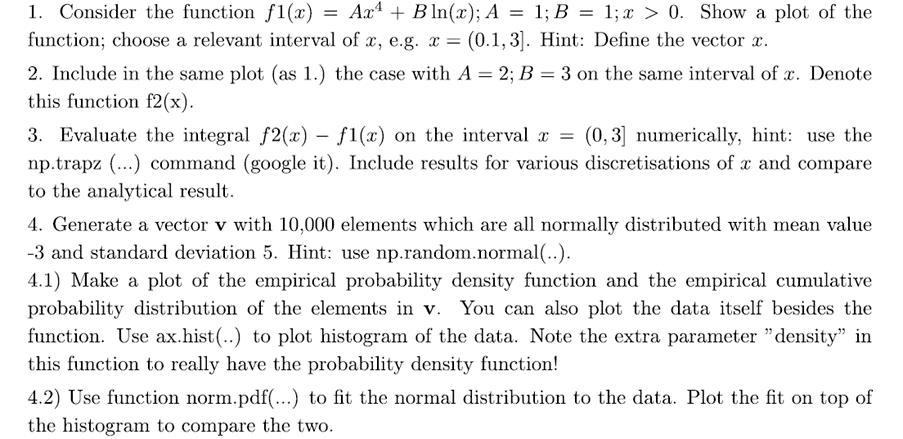Answered step by step
Verified Expert Solution
Question
1 Approved Answer
1. Consider the function f1(x) = Ax + Bln(x); A = 1; B = 1; x > 0. Show a plot of the function;

1. Consider the function f1(x) = Ax + Bln(x); A = 1; B = 1; x > 0. Show a plot of the function; choose a relevant interval of x, e.g. x = (0.1,3]. Hint: Define the vector x. 2. Include in the same plot (as 1.) the case with A = 2; B = 3 on the same interval of x. Denote this function f2(x). 3. Evaluate the integral f2(x) - f1(x) on the interval x = (0,3] numerically, hint: use the np.trapz (...) command (google it). Include results for various discretisations of x and compare to the analytical result. 4. Generate a vector v with 10,000 elements which are all normally distributed with mean value -3 and standard deviation 5. Hint: use np.random.normal(..). 4.1) Make a plot of the empirical probability density function and the empirical cumulative probability distribution of the elements in v. You can also plot the data itself besides the function. Use ax.hist(..) to plot histogram of the data. Note the extra parameter "density" in this function to really have the probability density function! 4.2) Use function norm.pdf(...) to fit the normal distribution to the data. Plot the fit on top of the histogram to compare the two.
Step by Step Solution
There are 3 Steps involved in it
Step: 1

Get Instant Access to Expert-Tailored Solutions
See step-by-step solutions with expert insights and AI powered tools for academic success
Step: 2

Step: 3

Ace Your Homework with AI
Get the answers you need in no time with our AI-driven, step-by-step assistance
Get Started


